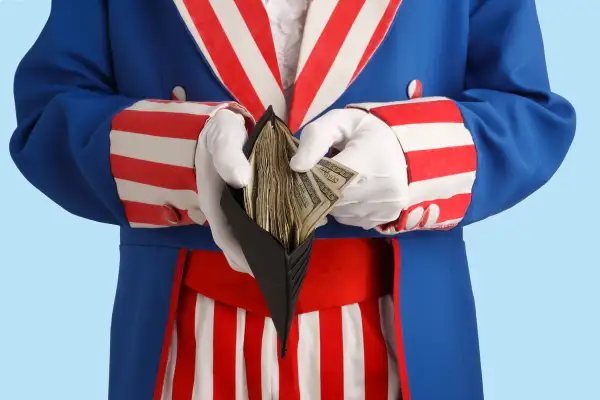Why I Dumped My Tax-Free Money-Market Fund—and You Should, Too!
Money is not a client of any investment adviser featured on this page. The information provided on this page is for educational purposes only and is not intended as investment advice. Money does not offer advisory services.

I love tax-exempt income. It’s nice to be able to keep your interest and dividends from assets like municipal bonds or tax-exempt money-market funds rather than having to share the proceeds with the IRS and state and local governments.
But recently, I moved a serious slug of money out of tax-free money funds into taxable funds. It’s not that I suddenly decided the time had come to pay more to Uncle Sam. It’s that, at least for now, the difference in yields between taxable funds and tax-free funds is compelling. Even taking taxes into account.
When I looked at my portfolio earlier this month, I realized that the tax-exempt money funds in my regular accounts were yielding about 0.02 of 1%, while the taxable money funds in my retirement accounts were paying around 0.4 percent.
That’s right, my taxable funds (on which I don’t pay current tax because income on retirement accounts is tax free until I take the money out) were yielding 20 times as much as my tax-free funds.
I’m embarrassed to say that I discovered this largely by accident. I was looking at my accounts in early March, shortly after my monthly money-market fund dividends posted, and realized that my retirement-account money funds had paid much larger (albeit still small) dividends for February than my regular money fund accounts, which have much higher balances.
So I looked at the yields for the money funds in my family’s portfolio to see what was going on. Then I did a little research.
It turns out that, unnoticed by me, rates on so-called “prime” money funds and Treasury and federal money funds had begun rising around Thanksgiving. Meanwhile rates on tax-exempt funds stayed around 0.01% or 0.02% for various technical reasons.
I switched my non-retirement money fund assets out of the tax-free accounts into a federal money fund that owns Treasury securities and securities of federally-guaranteed issuers.
The math was simple. Leaving money in tax-free money funds produces 0.02% after taxes. Putting it into a taxable federal money fund yielding 0.3% gives me an after-tax yield of about 0.2%. That’s 10 times as much.
I could have put the money into a prime fund yielding 0.4%, but decided not to. Federal fund dividends are partially exempt from the stiff income tax I pay in New Jersey, while prime fund dividends aren’t. So why take even the slightest risk to gain a very small extra return?
QUIZ: How Smart Are You About Saving For Retirement?
If you own tax-free money market funds, you might want to consider doing what I’ve done, and switch to a taxable fund. Just make sure that you’re not switching into one of the taxable funds still yielding less than 0.1 of one percent.
Paying Uncle Sam (and maybe a state and local government, as well) isn’t fun. But earning lots more after taxes by owning a taxable fund than you’re earning with a tax-free fund…well, that’s certainly enjoyable, even if you have to give tax collectors a piece of t action.
